Ulir dungeon
Board game design
October 2018
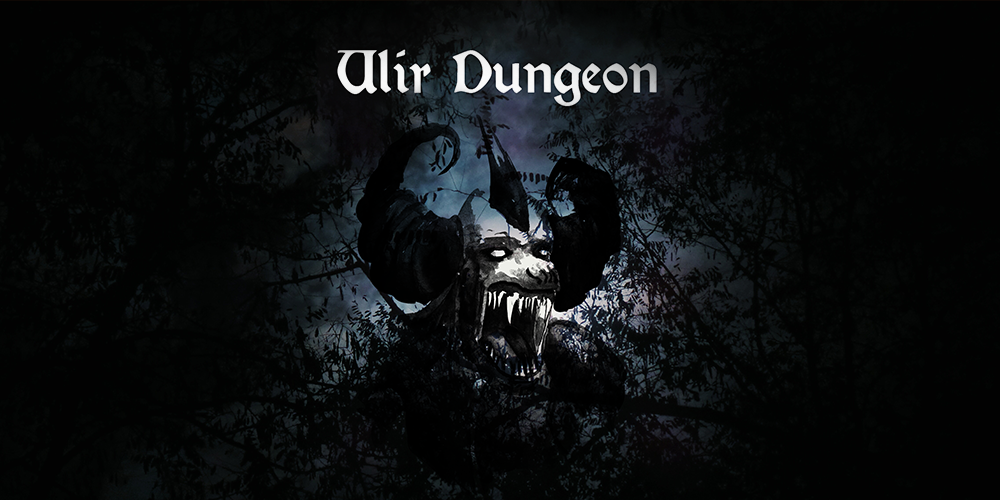
Brief
The goal of this exercise was to create a board game in which the mechanics used are two mechani-cards picked randomly, the one we got were: “Resource management” and “drafting”. And one of the constraints of this project was that the game has to fit in a 20x10cm box.

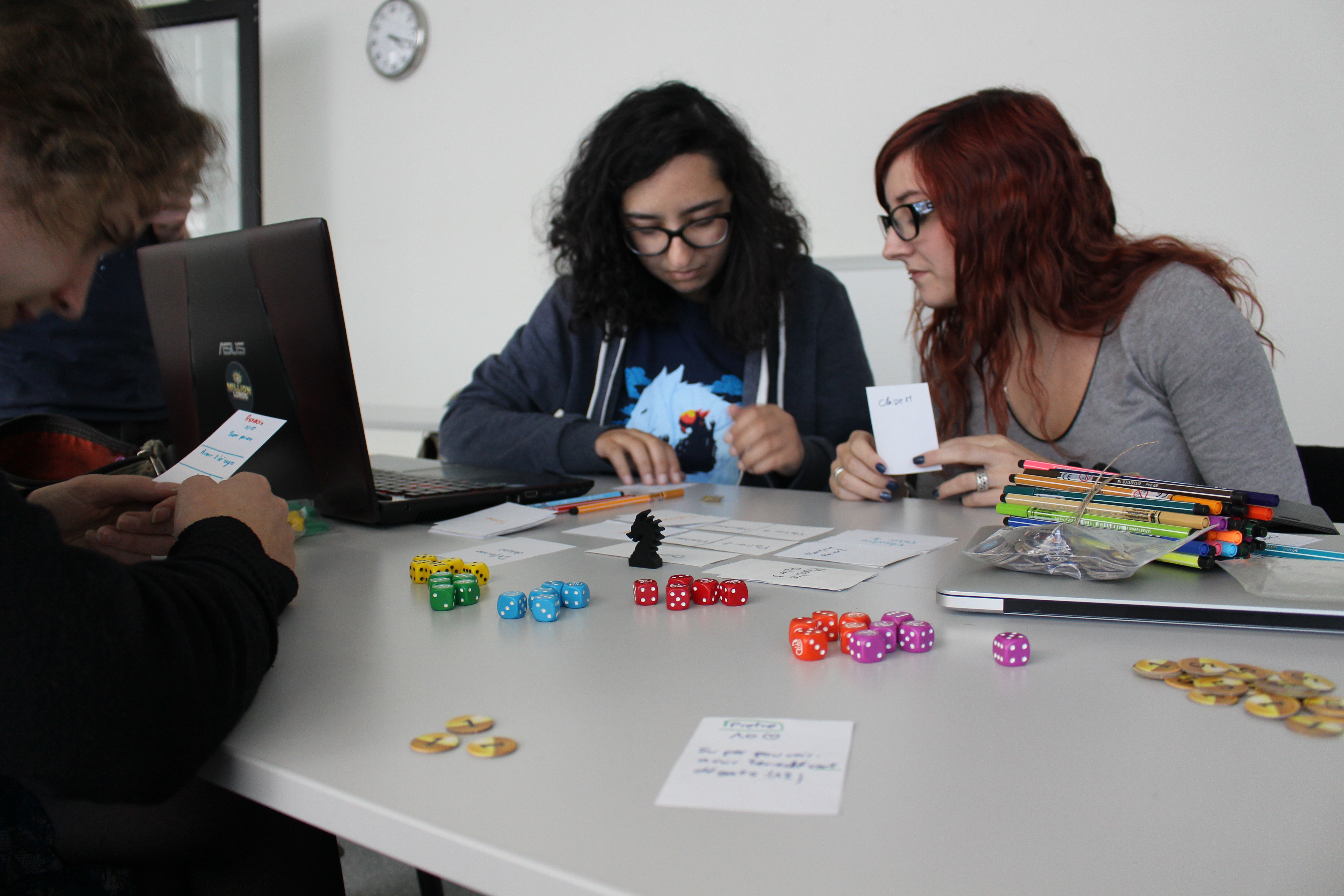
Concept
In our game, Ulir is the god of death, groups of adventurers fight in its dungeon to try to get to the last level and kill it.
It’s a 4-8 players game, playable in groups of two, in which the players have to pick a monster card in each level, launch dices to do damage, and pick up their loot to get stronger. The first team to beat the boss in the final level beats the game.
Game overview
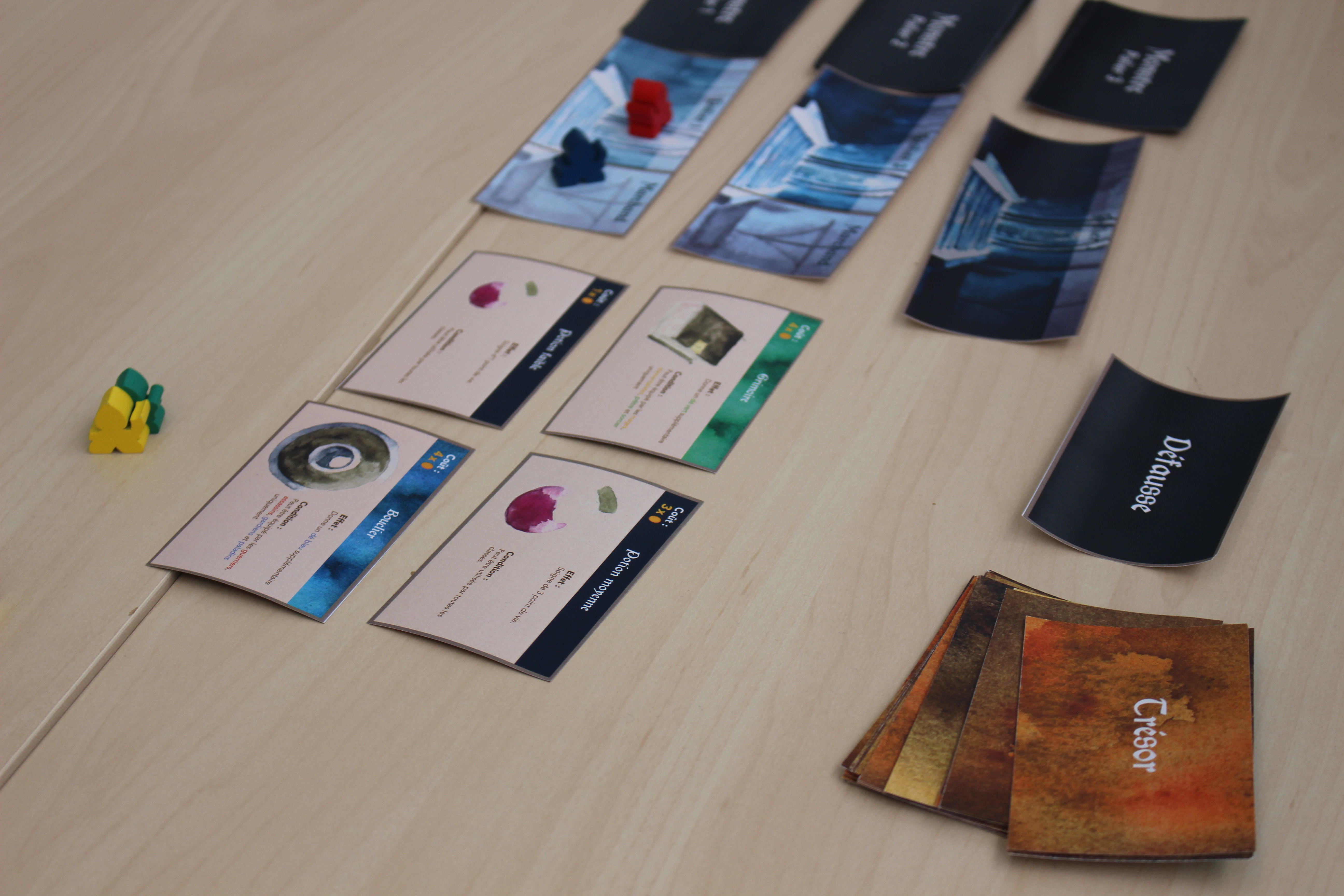
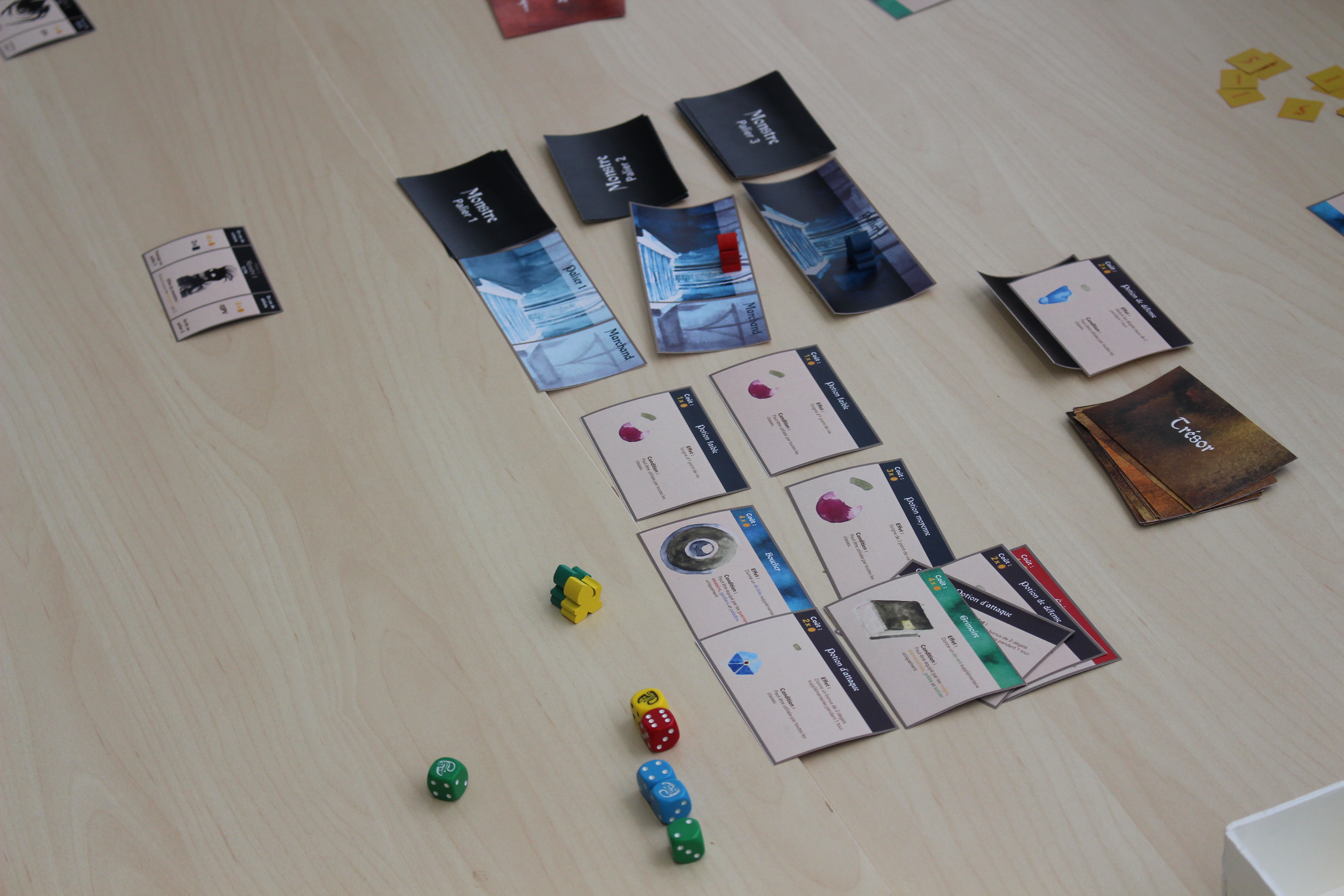
Rules
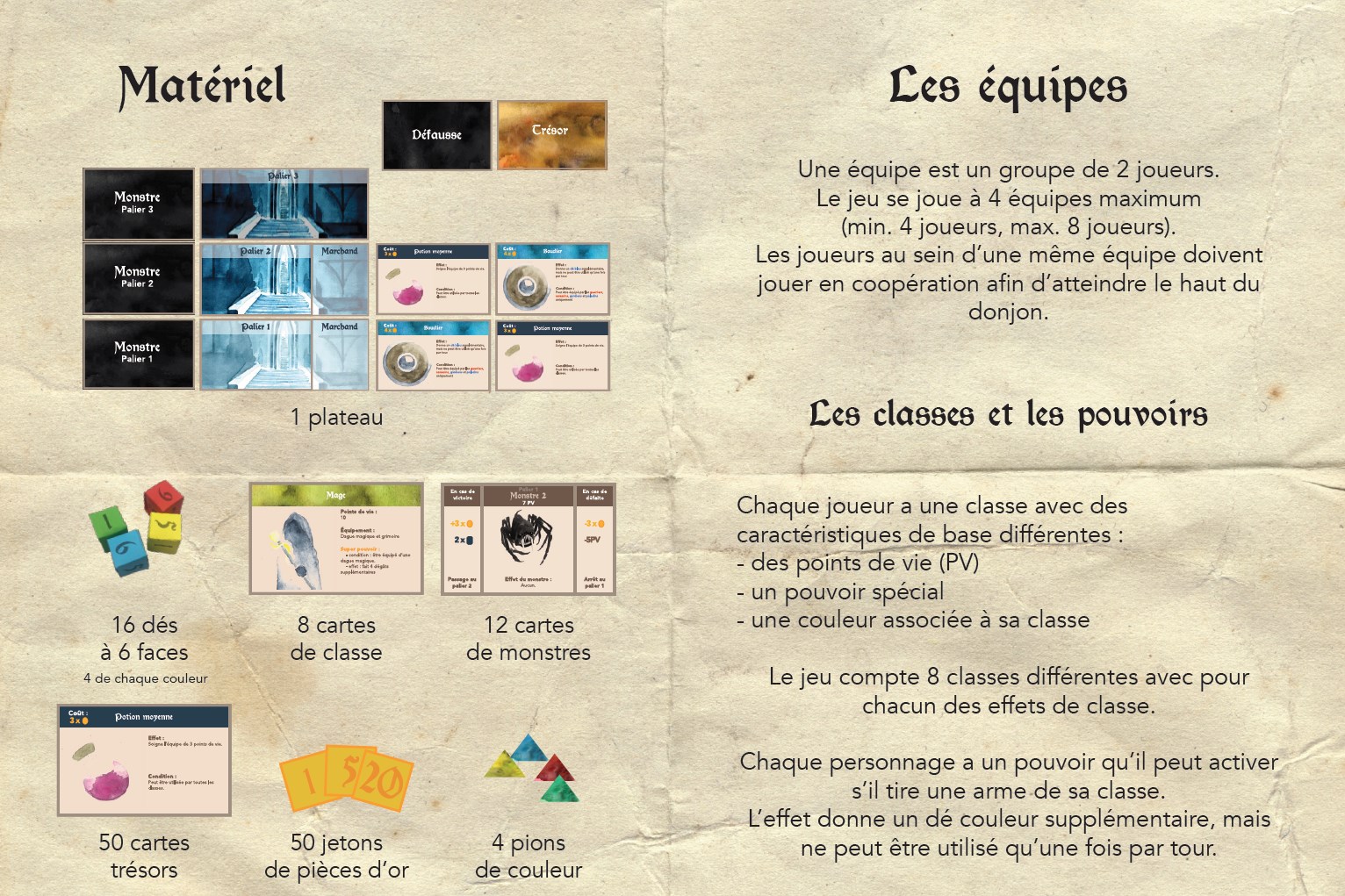
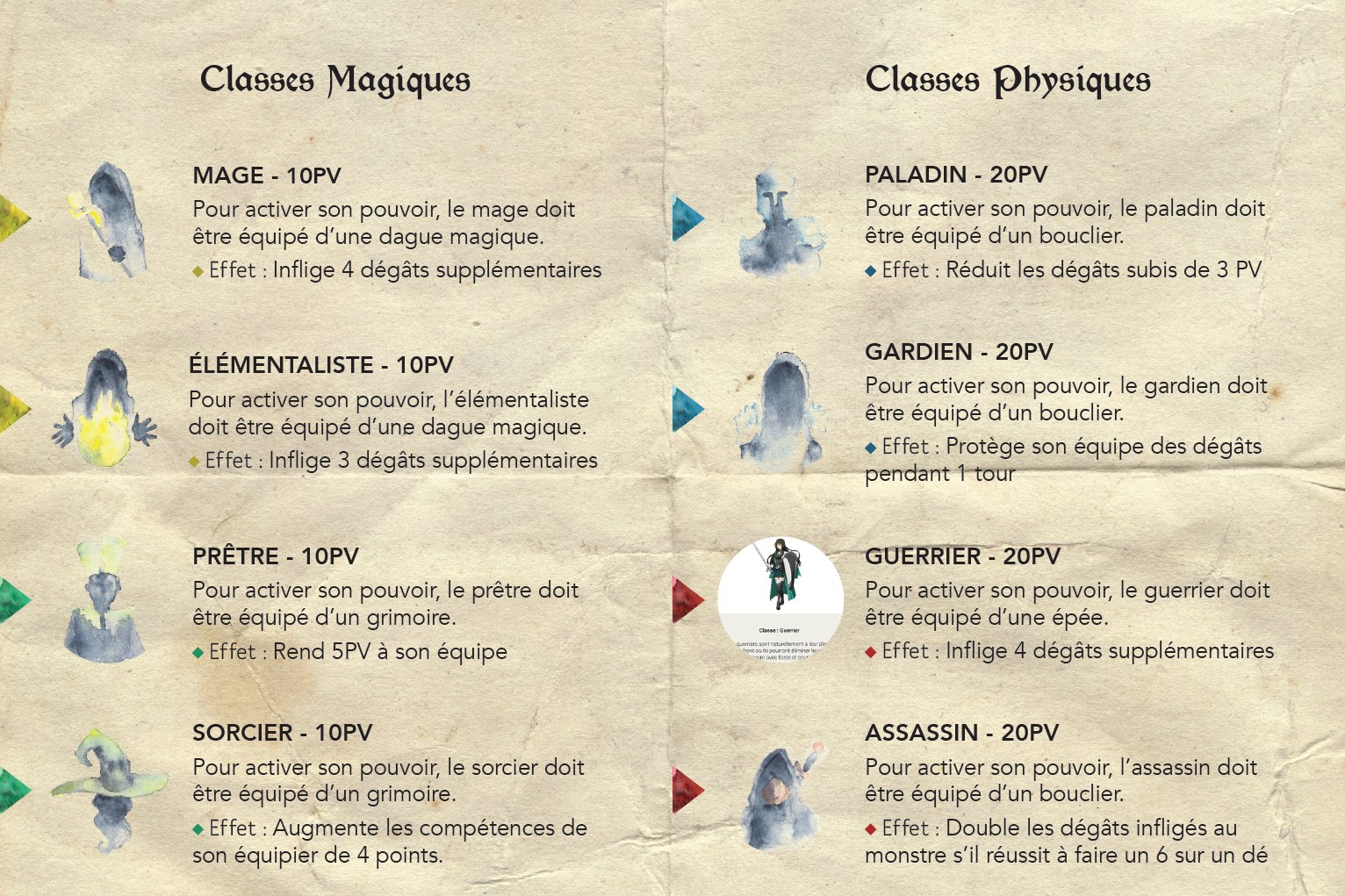
Teams and classes
The teams are made of a physical class and a magical class. Physical classes have 20HP and magical classes have 10HP each class has its own color, special power and equipment they can wear.
Magical classes are: mage, elementalist, priest, sorcerer. Physical classes are: paladin, guard, warrior and assassin. They’re picked randomly at the beginning of the game.
The color of each class determines the color of the dice that the player can get to attack the monsters.
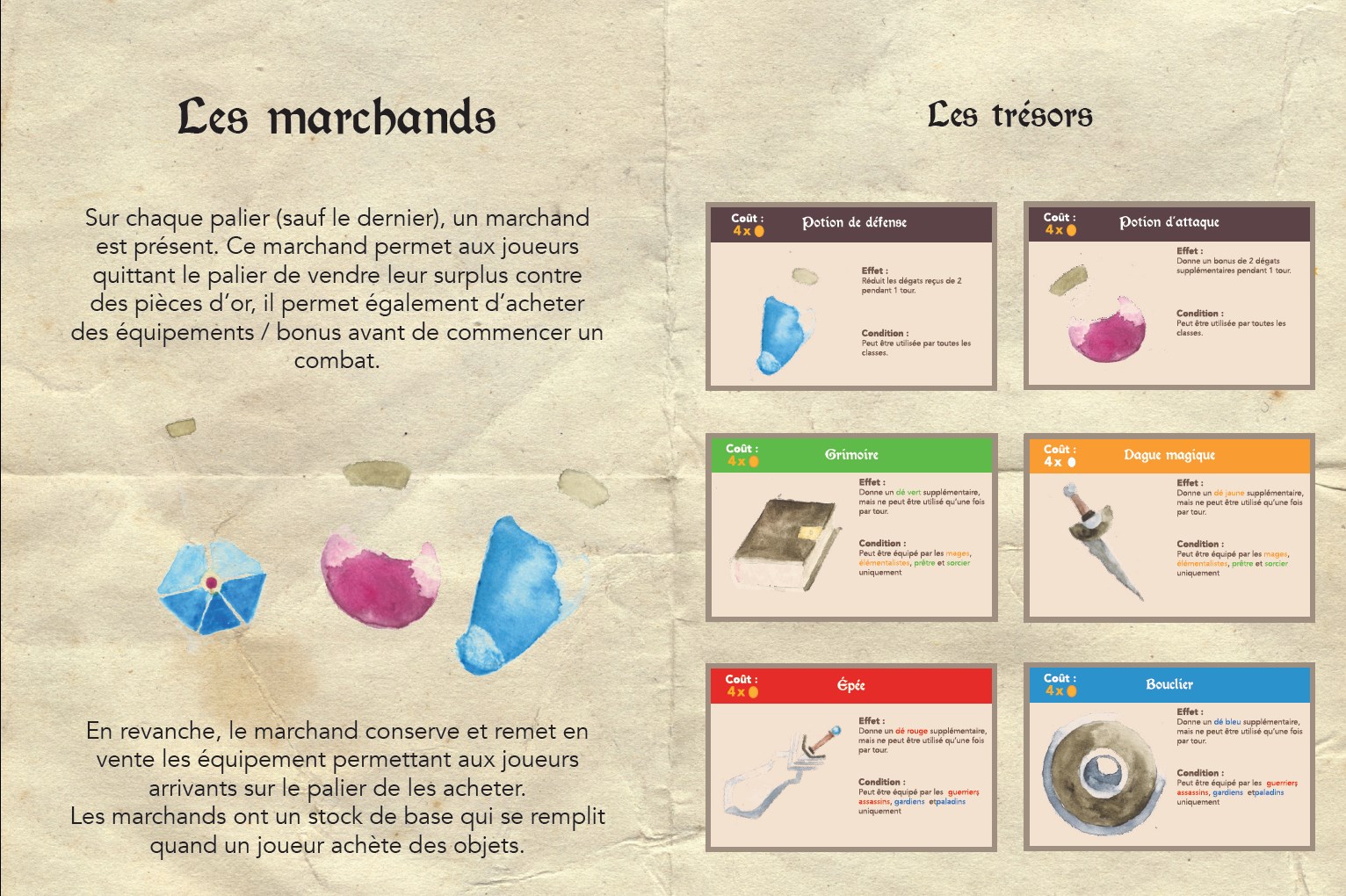
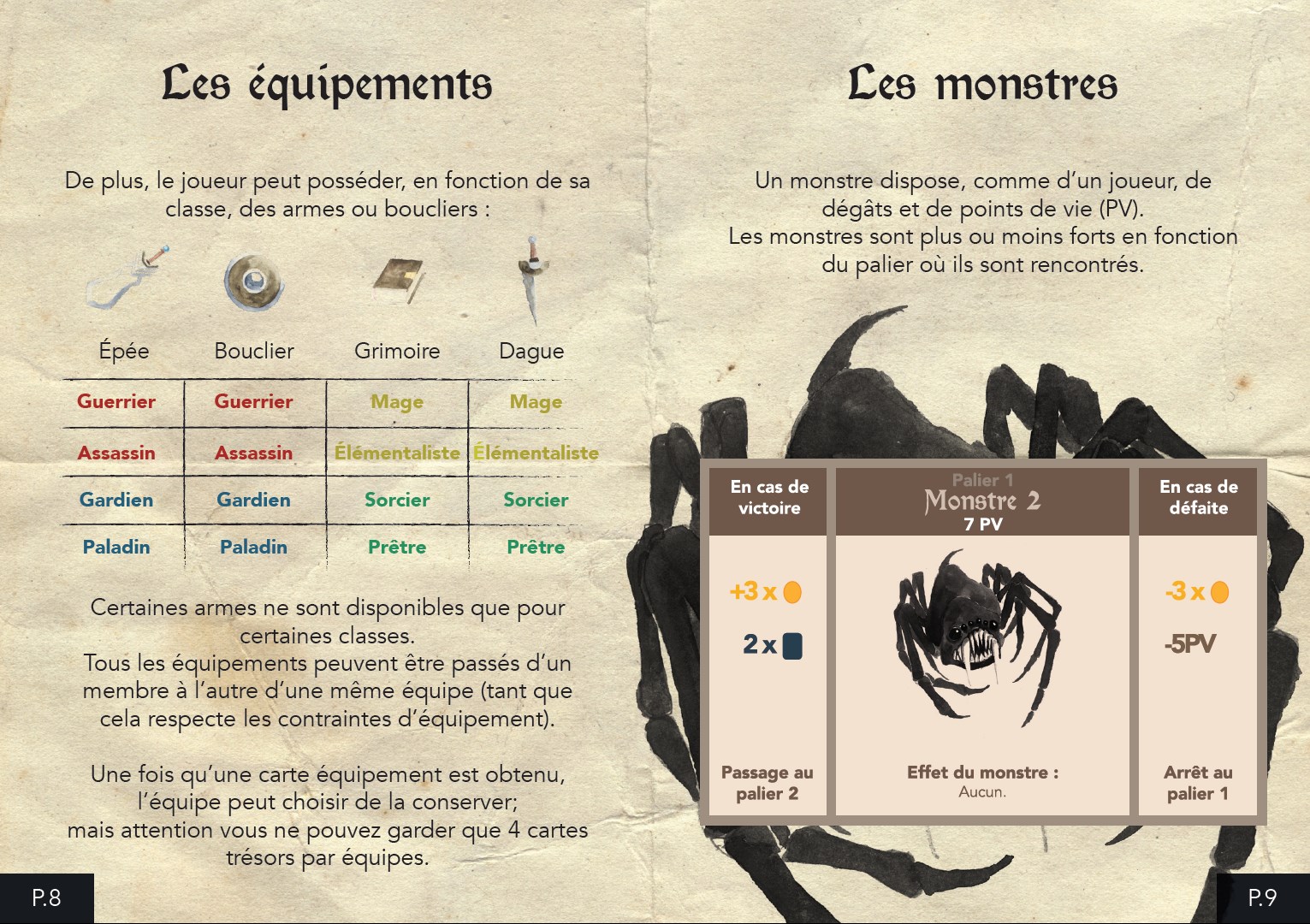
Treasures
The treasure cards are cards that can be obtained by fighting monsters or bought in the shop with coins. In these treasures, adventurers can find equipments and potions.
Each class can have a main weapon and secondary weapon. When equipped they add a dice of the color of the weapon to the player who equips it. Physical classes can equip a sword and a shield while magical classes can equip a magic dagger and a grimoire. When a class has its main weapon equipped, they can use their special power.
In the first turn each team picks 2 treasure cards and 10 coins. In each level, there’s a shop in which items are randomly displayed: they can be bought by any team when they arrive on the level before fighting the monster.
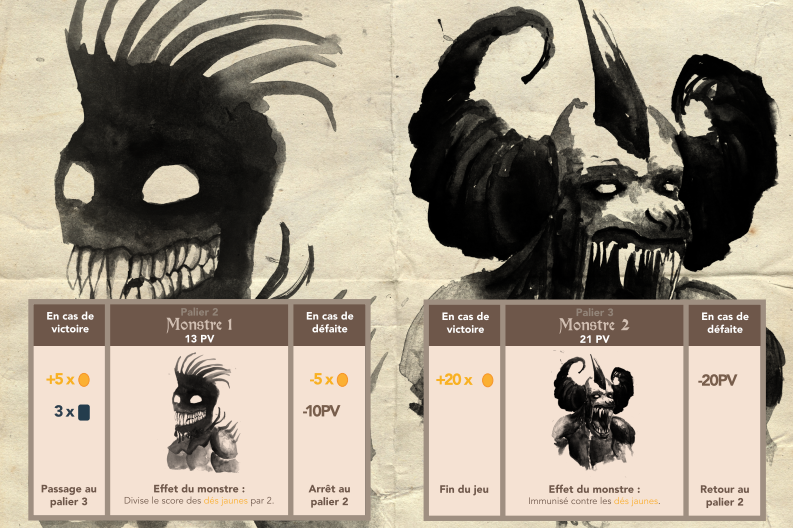
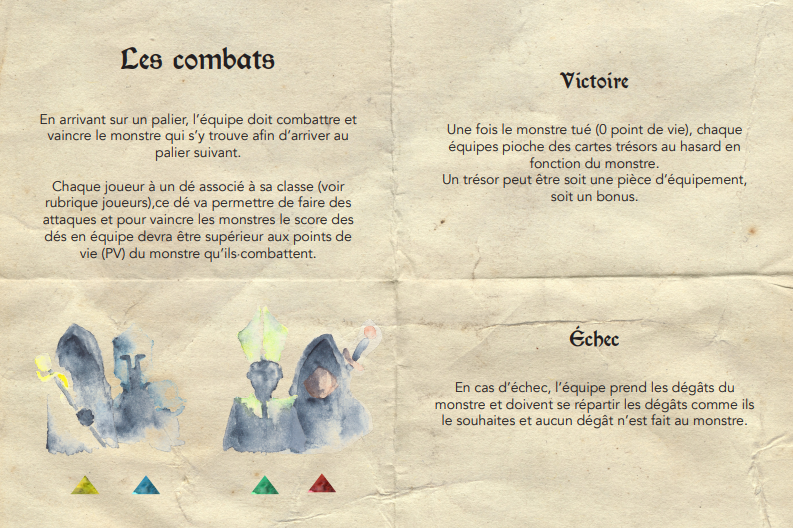
Monsters and levels
In each level, the team can pick a random monster, then fight it. To kill it, they have to obtain a dice score superior to the monsters HP.
If they win, they get the rewards written on the monster card – coins and treasure cards – then access the next level. If they lose, they pay an amount of coins and lose HP. However, they are able to share the damage between them as they wish.
Each monster has a number of HP and a malus effect, they become stronger in each level, and the team can choose to go back to the previous level and get more equipment by killing easier monsters.

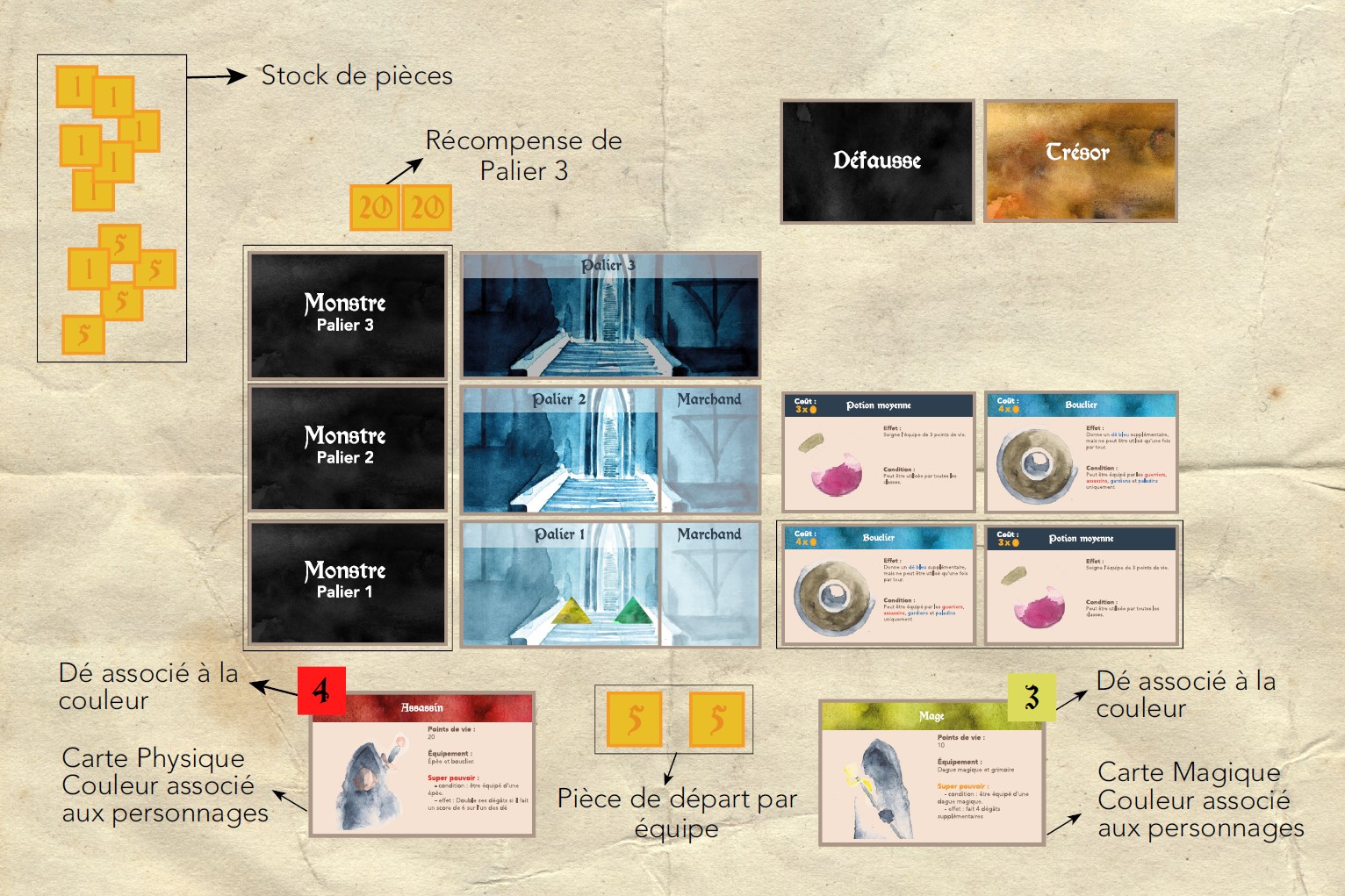
Card designs
Class cards
Class cards each have a color on the header (to determine the color of the class dice), a name, and a different visual. They also state gameplay informations: the base health points are displayed in each card to tell the player how many damage they can take from monsters. The equipments part in which the player can see which weapons they can equip, then a description of the special power and the conditions to activate it.

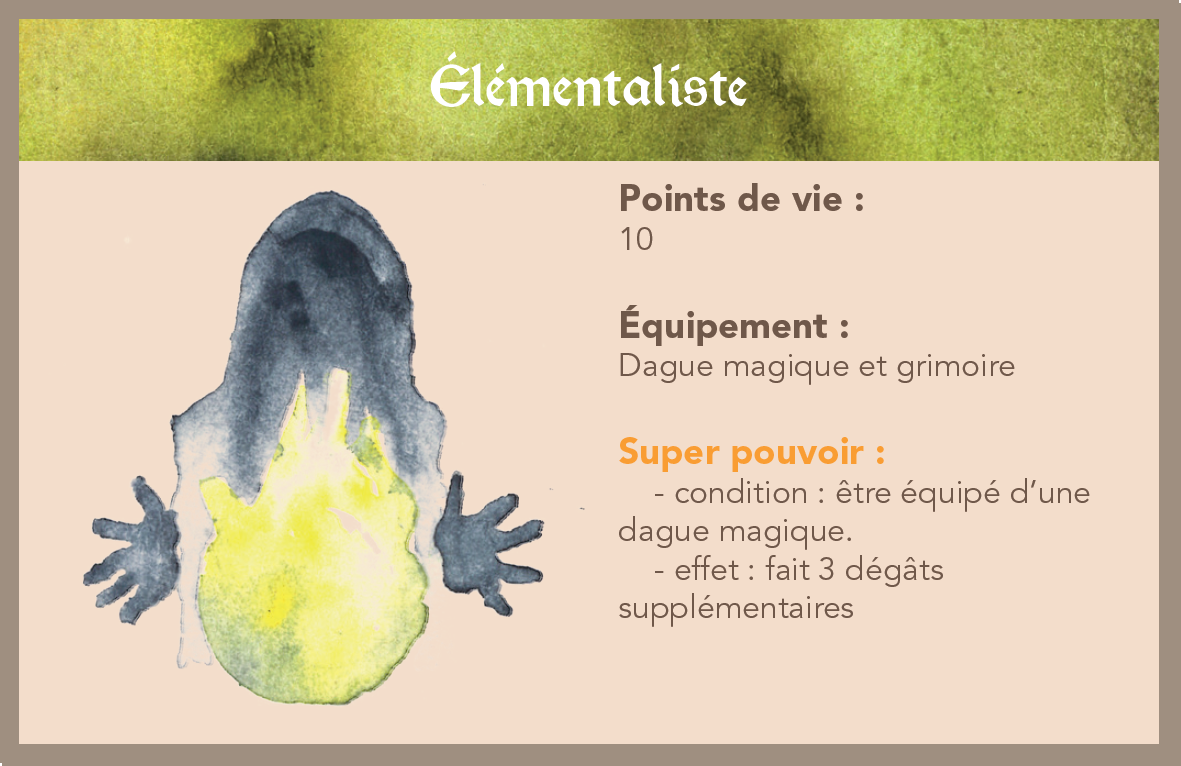
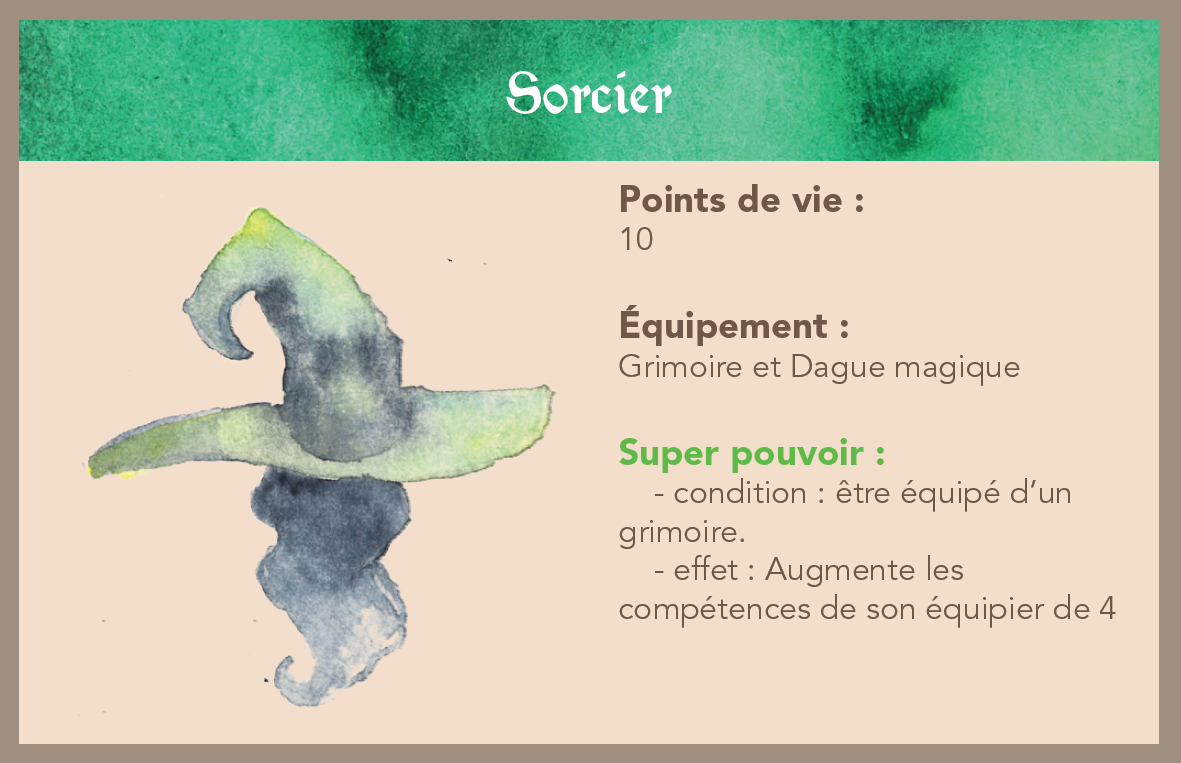
Monster cards
Each monster card displays a visual of the monster, its HP, and its malus effect. The card also shows the rewards if the fight is won, and the damage if the fight is lost. In each monster card, a visual shows which monster it is, how many HP they have, and what their malus effect are. It also shows the rewards if the fight is won, and the damage if the fight is lost.
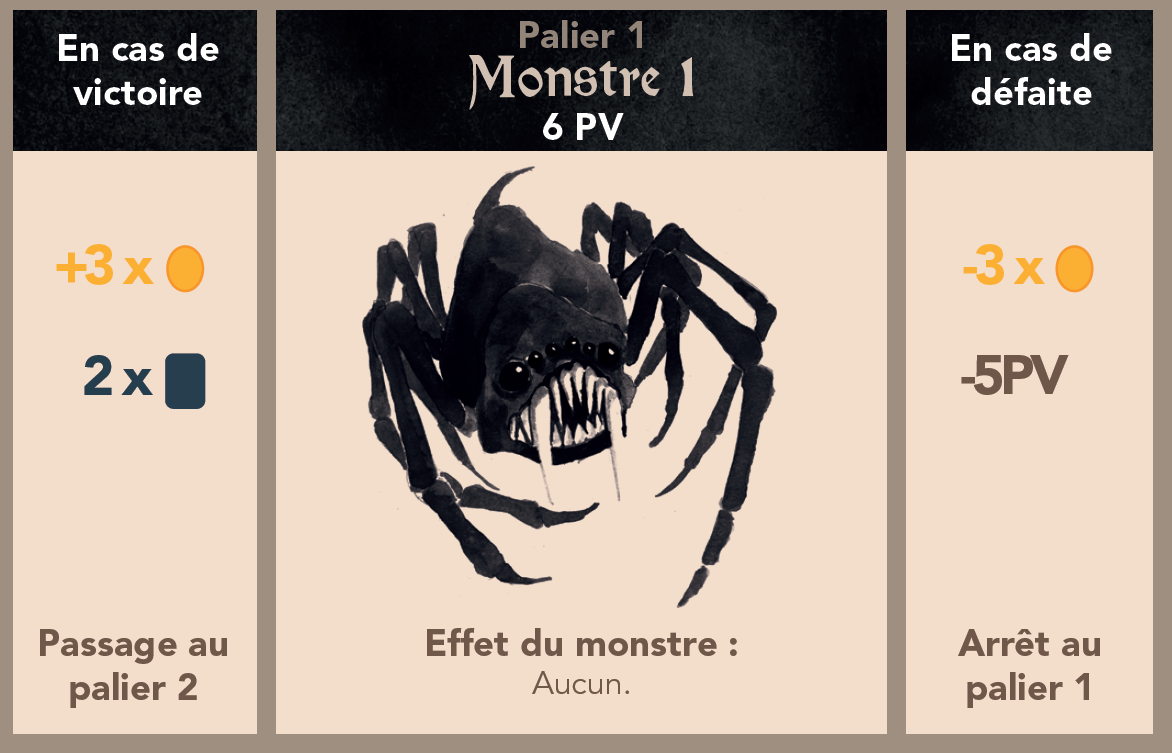
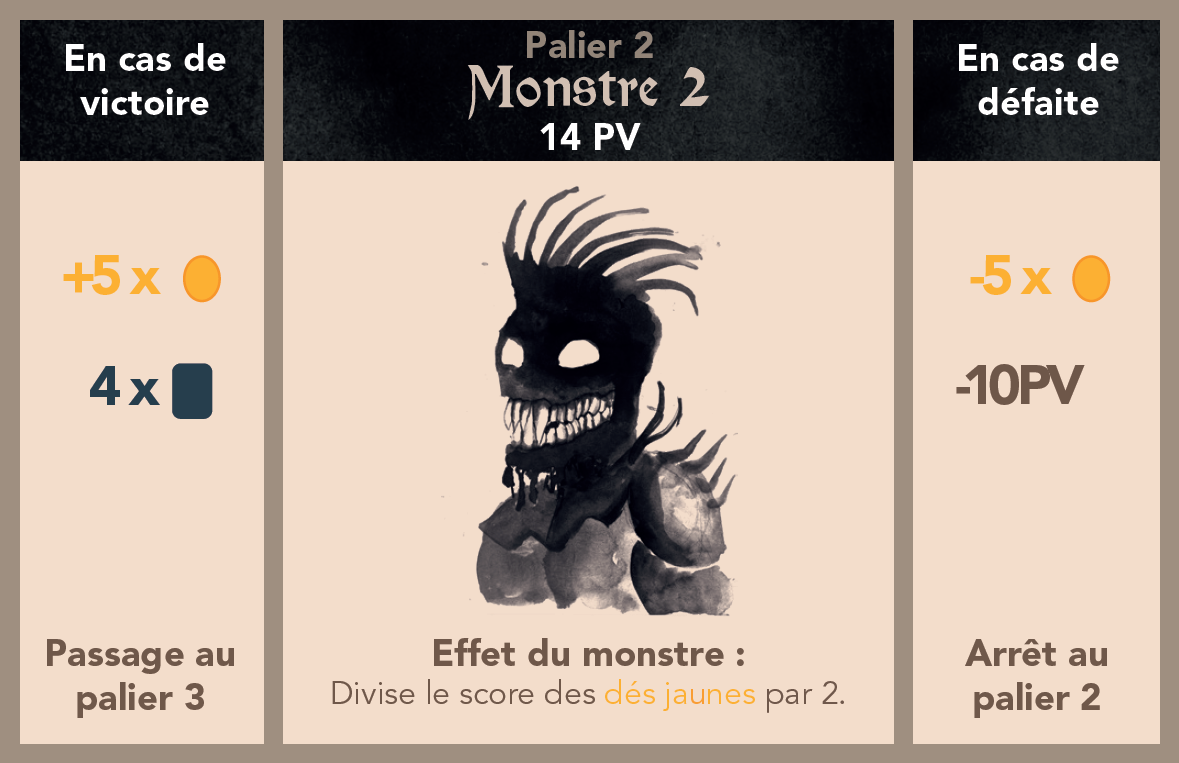
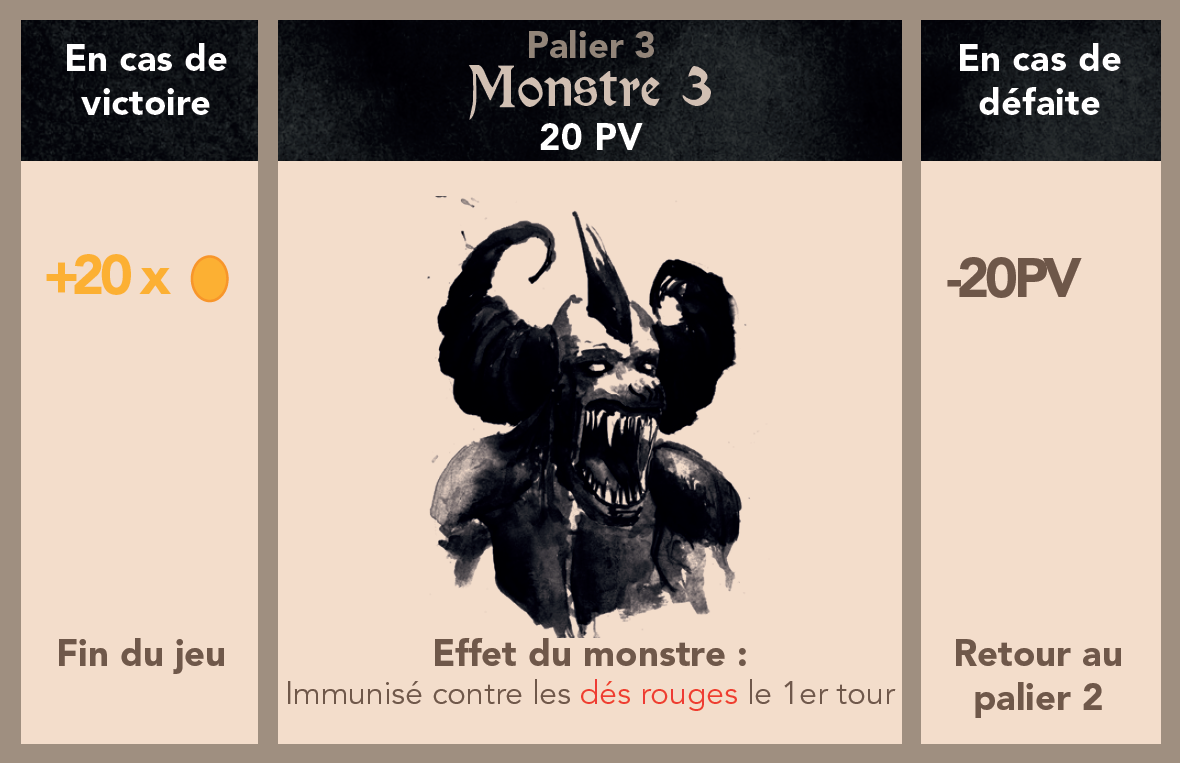
Item cards
Each item card displays the effect of the item, the conditions required to use it, and its price if they want to buy or sell it from/to the shop.
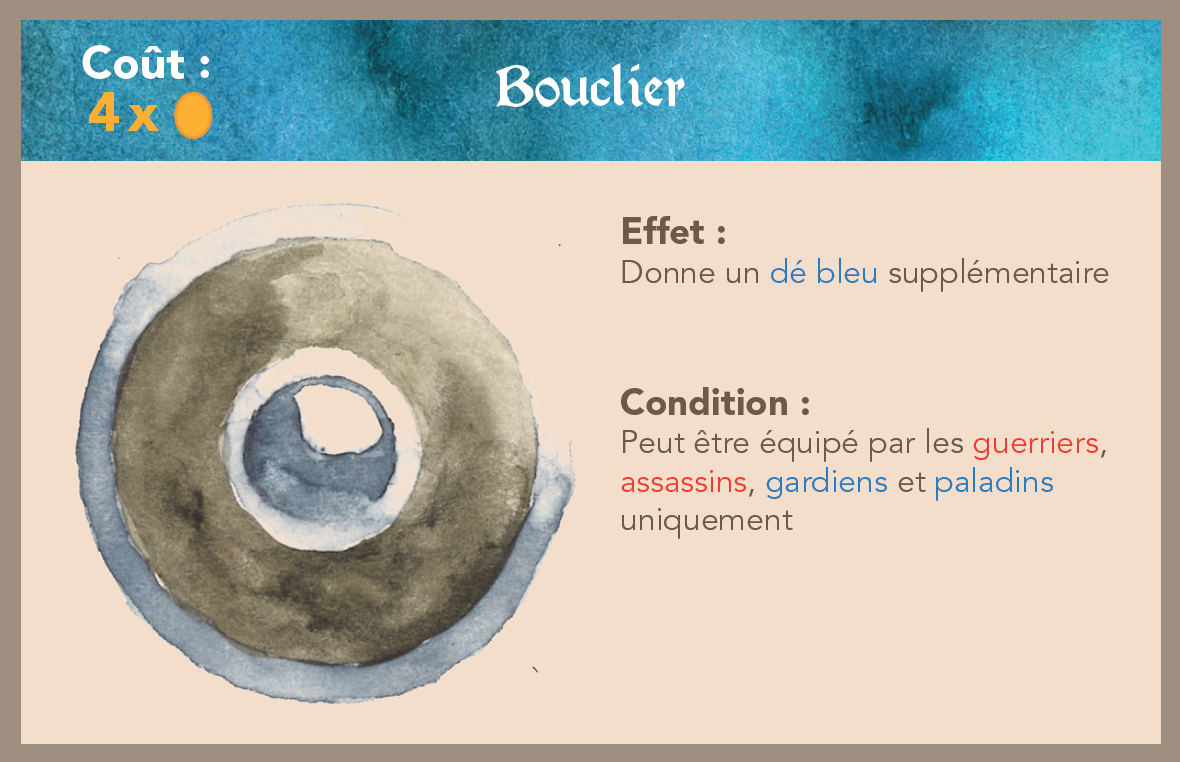
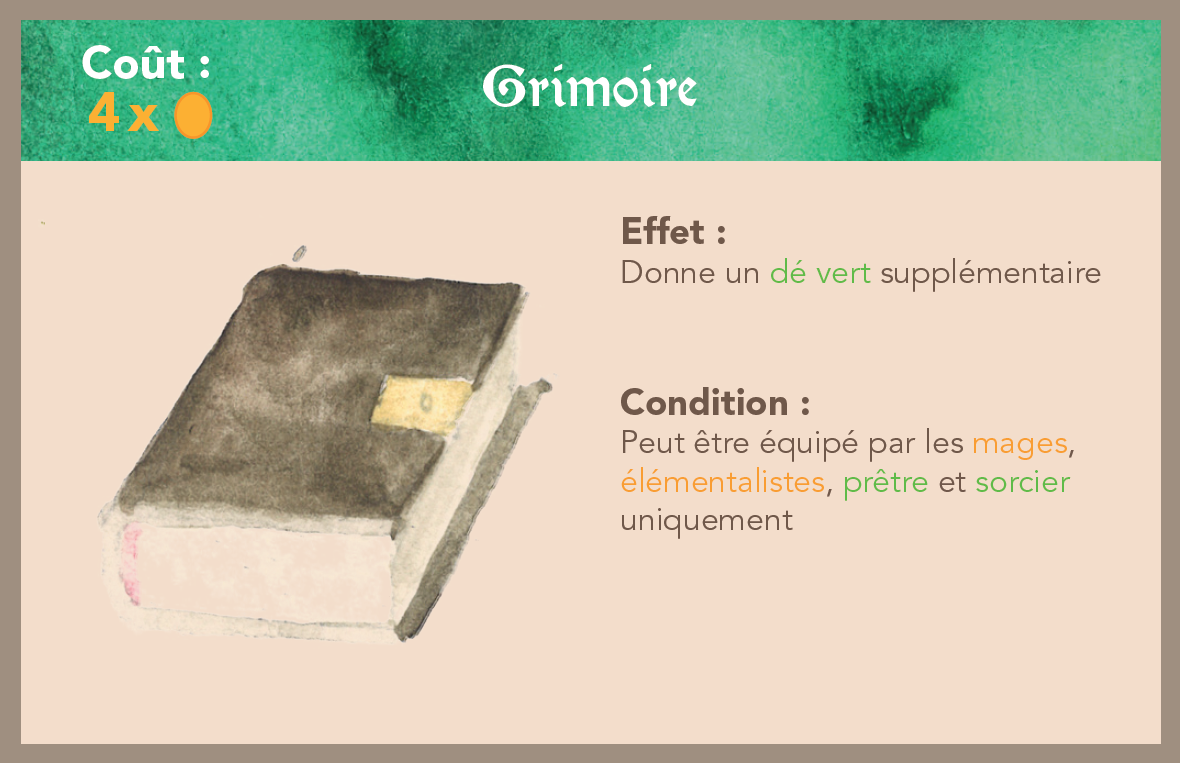
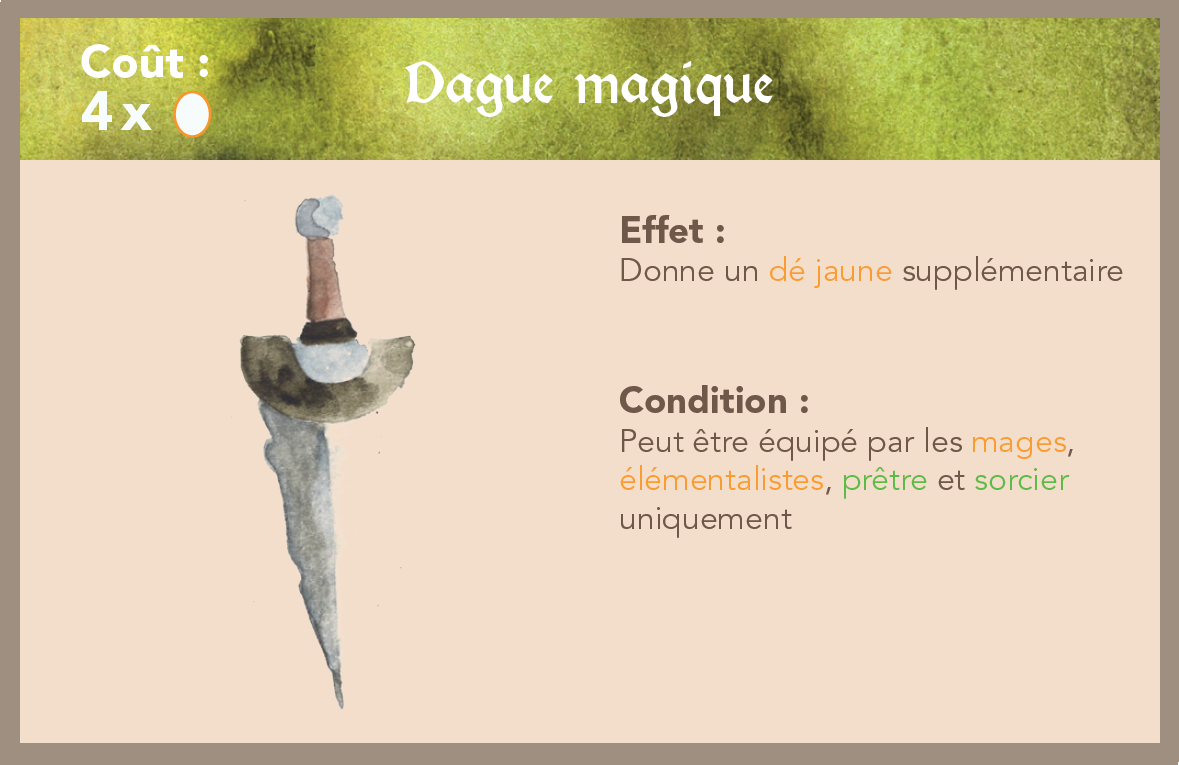
![]()
Software used
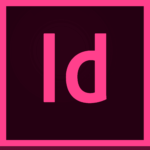
Indesign

Illustrator

Photoshop
Team
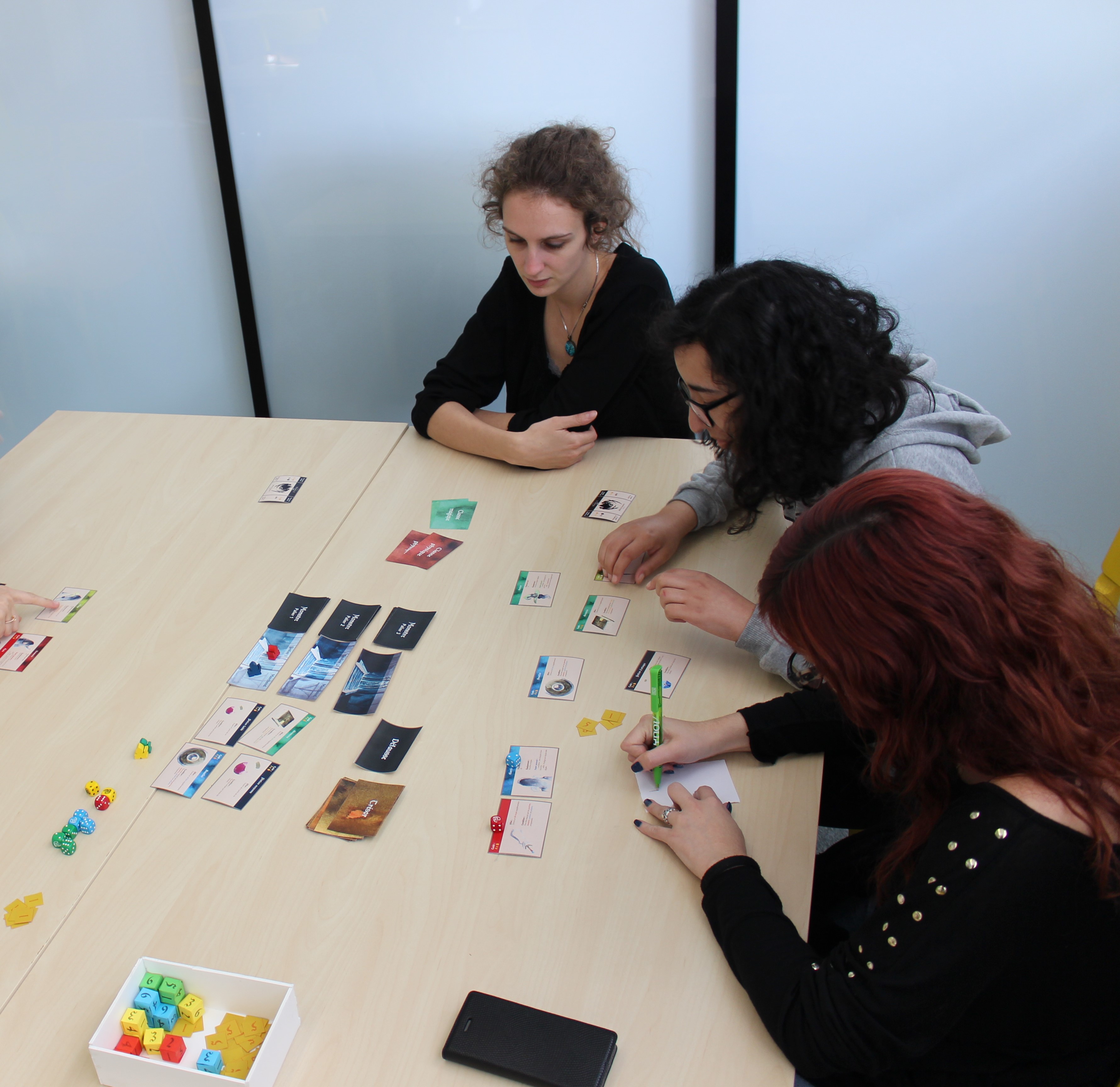
Elodie R
– Game design
Julie M
– Book layout
– Print design
Laila Bouchara
– Cards design
– Game design
Julie P
– Illustration

